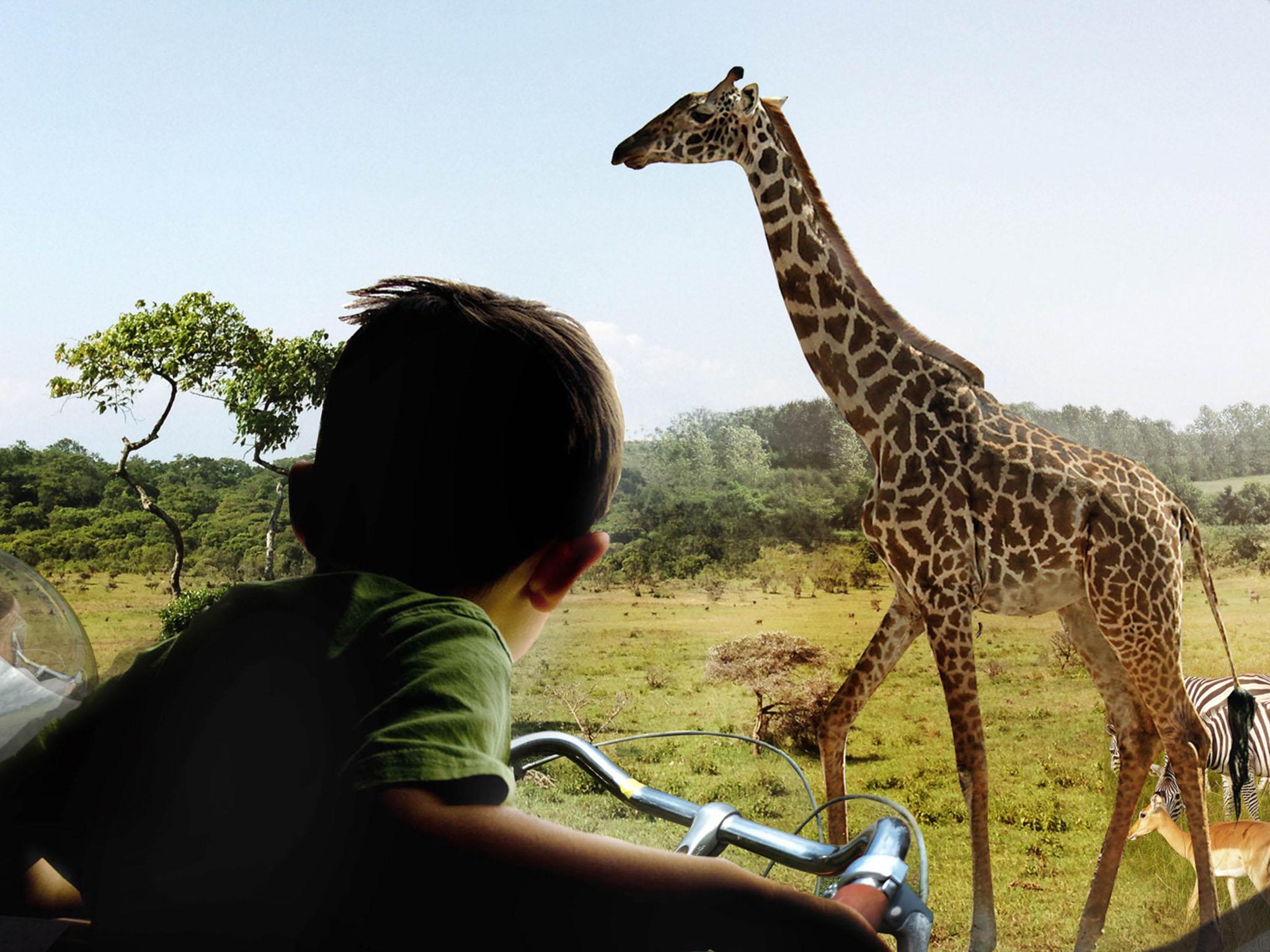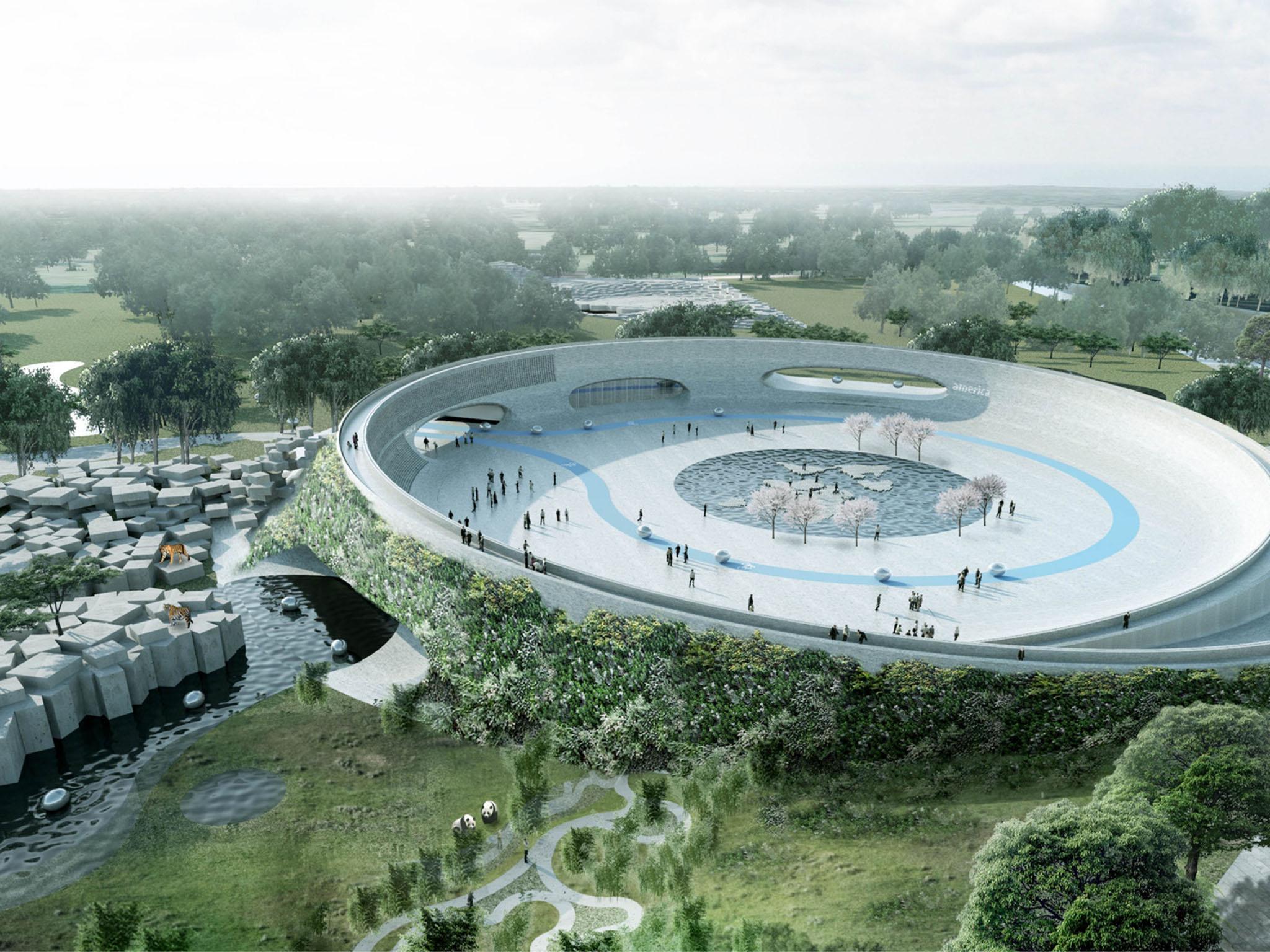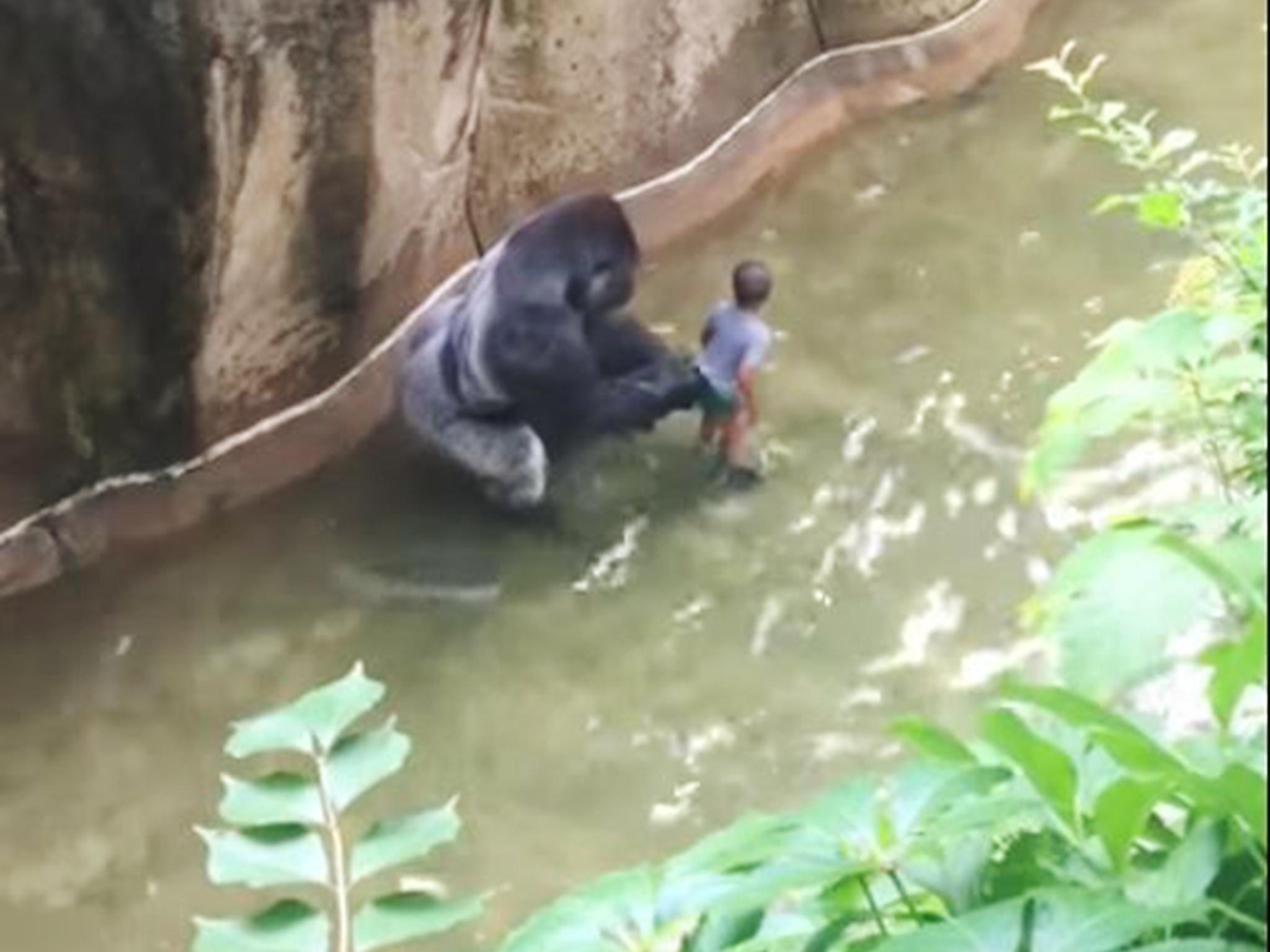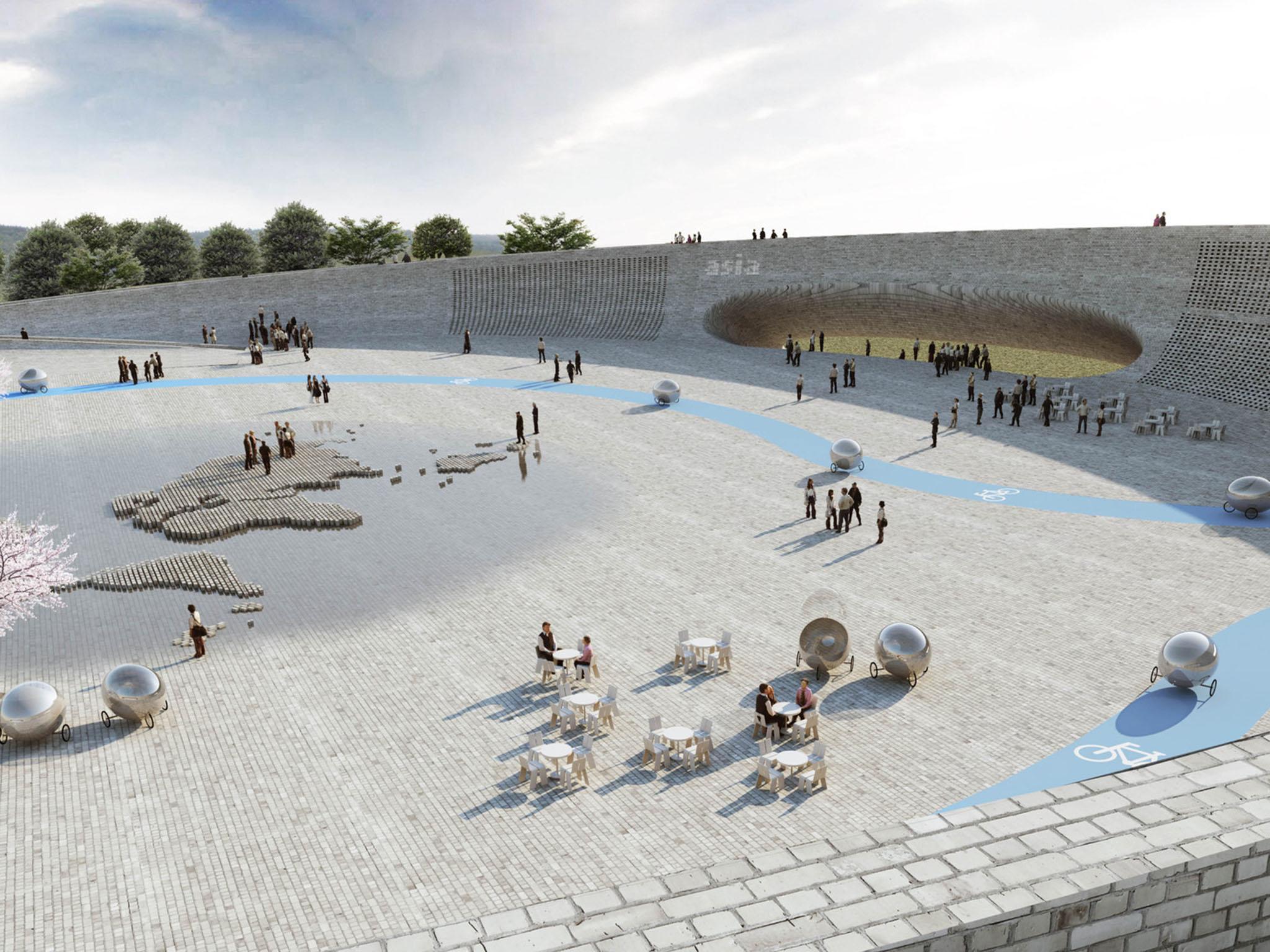Can zoos be redesigned for a more ethical generation?
In the face of growing public antipathy, zoos may be ushering a new era – from an £18m playground for giant pandas in Copenhagen to virtual reality animal watching in China

Your support helps us to tell the story
From reproductive rights to climate change to Big Tech, The Independent is on the ground when the story is developing. Whether it's investigating the financials of Elon Musk's pro-Trump PAC or producing our latest documentary, 'The A Word', which shines a light on the American women fighting for reproductive rights, we know how important it is to parse out the facts from the messaging.
At such a critical moment in US history, we need reporters on the ground. Your donation allows us to keep sending journalists to speak to both sides of the story.
The Independent is trusted by Americans across the entire political spectrum. And unlike many other quality news outlets, we choose not to lock Americans out of our reporting and analysis with paywalls. We believe quality journalism should be available to everyone, paid for by those who can afford it.
Your support makes all the difference.In early June, when animals were feared to have left Eifel Zoo in Germany after flooding breached the zoo’s fencing, you could hear the cheers echo around the world. A week later, a dream-like video emerged of an elephant walking through the small town of Neuwied, in the east of the country, having escaped from a local circus. Social media went wild. Public sentiment was defiantly on the side of these defectors, applauding their righteous break for freedom.
Zoos, circuses and safari parks are increasingly seen as places of kidnapping and imprisonment, and public antipathy towards them is spreading beyond the likes of Peta. Within the last few years Buenos Aires and Costa Rica have said that they will close their zoos and release the animals, and while the outcome of both plans is still awaited, they have been widely applauded for the statements alone. And closer to home, zoos have had a terrible run on the public relations, from the Black Isle Wildlife Park in Scotland, which was instructed to close down in 2016, to the South Lakes Safari Zoo in Cumbria, where a documentary called Trouble At The Zoo exposed that many animals had died, leading to boycotts from local schools. When the European Association of Zoos and Aquaria conference took place in Belfast in 2016, a local councillor called Chris McGimpsey compared the local Bellevue Zoo to a “Victorian peep show” where we “gawk at animals through the bars”. Some go further yet, likening zoos to slavery and colonialism, an exploitative format that is in its swansong.
All this zoophobia shows a growing disquiet towards the use of animal captivity as entertainment, says Ben Minteer, zoo expert and bio-ethicist at Arizona State University, and the lead editor for a new volume, The Ark and Beyond: The Evolution of Zoo and Aquarium Conservation, which examines the future of zoos. “After all, zoos have quite a shady past with menageries and we’ve all seen those woebegone animal displays,” he says. “Reputationally, zoos are becoming more and more difficult.” “Slum zoos”, dolphinaria and performing circuses are particularly despised and are being dropped by travel agents and tour operators: all part of a greater consciousness about animal sentience and suffering, as well as an awareness of captivity related pathologies, which are said to include cannibalism and malnutrition to the repetitive activities known as “zoochosis” – not to mention a growing concern for the rights of animals. Some of the new findings are disturbing. A recent study found that elephants in zoos live only half as long as wild elephants.

So can zoos survive in this more critical era? Yes, says Minteer. “The zoo concept is still highly popular.” But they’re having to change, and designers and zoologists are stepping up to reboot the zoo for a more ethical generation. In April 2019, Copenhagen Zoo opens trendy architectural firm BIG’s £18m panda house for two giant pandas from Chengdu, China. Built to emulate their habitat, it has walkways for visitors to feel as if they’re mingling with the pandas: but defiantly on their terms, not ours. BIG’s approach is to subvert the human gaze and challenge the zoo animal as a “foreign object in a new land” – it also hopes to assist the pandas’ notoriously patchy sex life by way of this “behavioural enrichment”. “To design a home for someone is like capturing their essence, their character and personality in built form,” rhapsodised Bjarke Ingels, director of BIG.

Indeed, Denmark seems to be leading the zoological charge. Givskud Zoo in Jutland is currently raising funds for a long awaited and much vaunted 300-acre project called Zootopia, which hopes to open in 2020 and reboot the zoo by losing walls and cages, allowing the human into the animal realm, rather than the other way round. After a futuristic proposal by BIG that included self-propelled glass and bubble vehicles were considered, the concept is now being refined and as Givkud’s director, Richard Østerballe says, it’ll most likely be “a pedestrian experience with sailing as an option”. But the immersion of human into animal space remains its big idea, and Givskud hopes to show the way to the zoological future.

“The whole setup of Zootopia is the idea that the animals in place have created their own free state in Denmark,” says Østerballe. “They invite us people in to hear about their lives and teach us humans to respect other universes and other ways of living on this earth”. Østerballe adds that it can only be credible if the design is driven from the perspective of the animals, and by “making human barriers disappear as much as possible”, which he admits is a huge challenge. “People desire proximity but with many animals this is a dangerous task.” (After all, look at Harambe, the gorilla in Cincinnati Zoo, shot in 2016 after a boy got into his enclosure, and the woman attacked by a polar bear in Berlin Zoo in 2009.) But it’s possible, he believes, and points to the beginnings of Givskud Zoo almost 60 years ago as a safari park – an earlier immersive paradigm that is now being rethought because of the use of cars.
As it turns out, the idea of immersion of the human spectator into the animal world is quite an old one, dating back at least as far as 1907, when German entrepreneur Carl Hagenbeck opened Tierpark Hagenbeck in Hamburg, which used moats to break down barriers – not so far from the ideas mooted for Zootopia, which have included log piles and bamboo screening. But while it has been diluted, Zootopia has already caused fractious debate, on one hand criticised as a Truman Show-like fake, on another, hailed as a way to push forward a beleaguered format. As Minteer says, the “entertainment mission” of zoos has long sat askance with claimed benefits such as conservation and the maintenance of biodiversity and DNA databases. “With phenomena like Zootopia shaking up the model and catering to the behavioural needs of the animals, zoos are becoming a mix of animal welfare, naturalism and behaviourism,” he says. And of course spectacle will find its way in there, because after all, we love to look at animals.

Zootopia’s variety of radical immersion is certainly a positive direction in a sceptical age. But given that zoos are likely to remain with us, why stop there? Artist Kathleen Fleming, who studied in London and currently lives in Oregon, has created artworks around the theme of the “future zoo” in which mutant new animals, the product of biological engineering, could be seen. “Look at how dogs have developed,” says Fleming. “There are breeds now that didn’t exist even a few decades ago. Surely it’s possible for other animals to be domesticated and altered. For example, you could create smaller giraffes.” She also points towards the growing interest in “de-extinction” as a potential driver of the future zoo, citing Pleistocene Park in Siberia, where scientist Sergey Zimov and his son are aiming to create a simulation of the old tundra complete with genetically re-engineered woolly mammoths.
Fleming thinks that existing zoos are largely a “fascinating, weird anachronism. They say they have breeding programmes and are about managing diversity, but as John Berger suggested (in his essay “Why We Look At Animals”, part of his 1980 collection About Looking) they are “monuments to extinction”. Berger considered the modern zoo “an epitaph to a relationship which was as old as man”, a disruption of an ancient, authentic and coexistent relationship with animals. And while zoos like Givskud propose a naturalism that represents wildness, the wilderness is itself disappearing, and as to seeing animals in the “wild”, zoo watchers point out that as safari parks like South Africa’s Kruger National Park use fences, constraining the movement of the must-see “big five” animals such as elephants and lions, they are also an artificial scenario.
Zoo critics ask why technology can’t solve the problem of animal captivity. Wouldn’t augmented reality and virtual reality experiences be enough? Well, that’s also happening. Last year the first VR zoo opened in Guangzhou, China, which has been allowing visitors to interact with animals – including some that don’t exist any longer, such as dinosaurs. Dubai’s VRZOO includes encounters with endangered animals, and Ocean Odyssey in New York’s Times Square invites visitors to meet up with virtual whales “without getting wet”. But as Minteer says, the USP of the pre-digital zoo, the connection, can’t be beaten. “It’s a powerful and primal transaction between the wild animal and the human.”
For better or worse, it’s likely this will be developed, taking in new and startling ideas of naturalism. “Ideas like Zootopia show us that zoos have a dilemma in how to ways of seeing and valuing animals and wild places in the 21st century,” says Minteer, who predicts new ways of showing animals. “For example, I think predation, where people see animals eat each other just as they do in their natural habitat.” Curiously, this was pioneered in Copenhagen Zoo in 2014 when Marius, a giraffe, was fed to the lions in front of schoolchildren. The subsequent outcry showed that for now, this “red in tooth and claw” approach might be a radical immersion too far.
‘The Ark and Beyond: The Evolution of Zoo and Aquarium Conservation’, edited by Ben A Minteer (University of Chicago Press), £26.50
Join our commenting forum
Join thought-provoking conversations, follow other Independent readers and see their replies
Comments